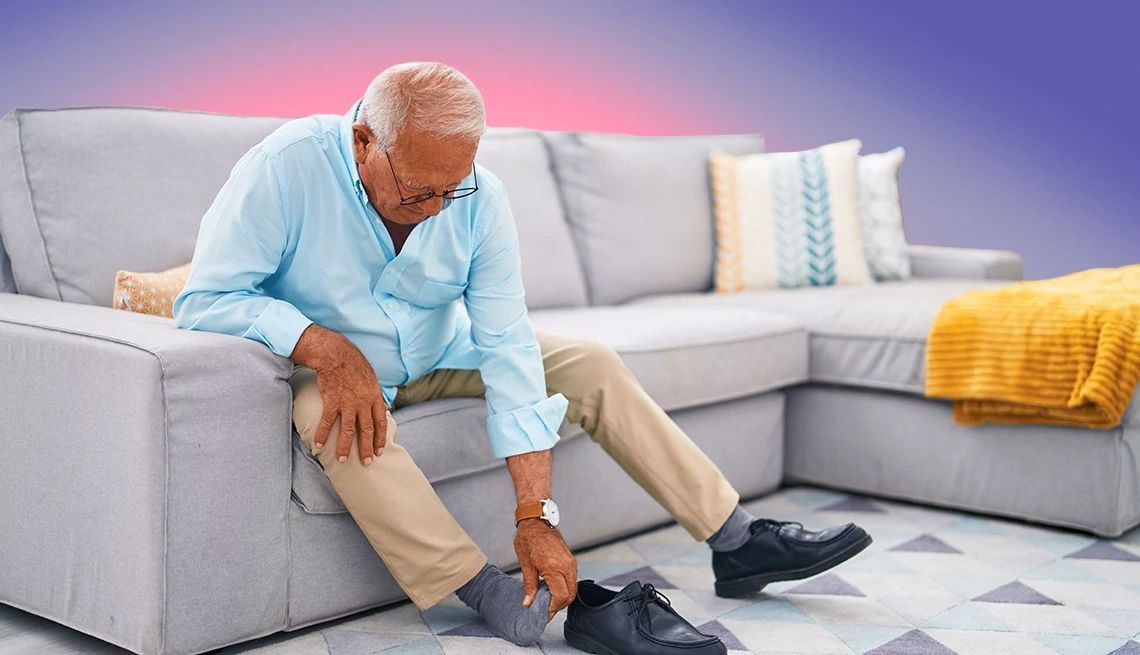AARP Hearing Center


Sandi Preston, a physical therapist, often reminds her 86-year-old mother to use her walker when moving about. But she forgot it one day when stepping out to get the mail. And even though it was a short distance to the mailbox, her mother lost her balance and fell.
Each year, more than 14 million adults aged 65 and older fall, according to the Centers for Disease Control and Prevention (CDC), and about 1 million of them end up hospitalized.
However, falls can be prevented. Here are 15 surprising things that can increase your risk of falling, plus advice on how to lower your risk.
Risk No. 1: Your medications
Medications can keep you healthy, but side effects that can cause dizziness, blurry vision or a delayed reaction time can make you more prone to falling.
According to the CDC, some medication categories that can increase your fall risk, include:
- Psychoactive medications, including antidepressants, opioids, and sedatives
- Antihistamines
- Muscle relaxers
- Blood pressure medications
- Anticholinergics (used to treat urinary incontinence, overactive bladder, or COPD)
Lower your risk: Keep a list of your medications — including your doses and why you are taking each. Don’t forget to include over-the-counter medications and supplements. Then, review your list with your doctor or clinical pharmacist and have them identify and discuss any that could increase your risk of falling. Your health care provider may make some changes, like lowering your dosage or switching to an alternative.
Risk No. 2: Diabetes
People who have diabetes often have other problems that increase the risk of falling, such as loss of vision (retinopathy) and sensory function (neuropathy). What’s more, medications that control blood sugar can cause levels to go too low (hypoglycemia), making a person light-headed.
Other Fall Risks
Several other risk factors and home hazards can lead to falls. Some of them include:
- Area rugs
- Phone chargers and other cords
- Poor lighting
- Clutter
- Poorly marked curbs and uneven sidewalks
A cane, walker or other assistive device can help keep you more independent — and on your feet. A health care provider — your doctor or physical therapist, for example — can help you pick out the right device and adjust it to match your height and needs.
Lower your risk: Keep your diabetes in check by attending routine medical appointments, eating a healthy diet, keeping active most days, testing your blood sugar often, managing stress and taking your medications as prescribed.
Risk No. 3: Other age-related diseases
Parkinson’s disease, stroke, arthritis and peripheral artery disease can also affect your ability to walk and can increase your risk of falling.
Lower your risk: If you have one of these conditions, talk to your doctor about doing a fall-risk assessment, which includes a review of your strength, gait, cognition and medications.
Risk No. 4: Your pets
Man’s best friend can be a fall hazard. Excited pets can jump and knock you over, Preston says. They can also get under foot and push in front of you — especially when you’re trying to get out the door, she adds. A 2009 CDC study found that 86,629 fall injuries each year were associated with cats and dogs.
Lower your risk: If a pet is in your way, don’t step over them — make them move, the Ohio Department of Aging recommends, and always check around to see where your pet is before walking near steps. If you don’t feel you can easily handle walking your dog, hire a dog walker or ask a neighbor to help. Consider getting your pet’s energy out at a dog park or in another fenced-in area. In its 2009 report, the CDC also recommends obedience training for dogs.
Risk No. 5: Worsening memory
As we age, it’s common to have some forgetfulness — Where did I put my glasses? Developing Alzheimer’s and other forms of dementia is less common, but when it does occur, symptoms typically start after age 60.
When someone has dementia, the brain can have trouble telling the body what to do and how to navigate when walking, putting that person at increased risk of falling. A 2023 study published in Alzheimer's & Dementia: The Journal of the Alzheimer's Association, found that nearly half of older adults with dementia experienced one or more falls in 2016, compared to less than one third of older adults without dementia.
Lower your risk: In your home, make sure that items you need are easily and readily available. Keeping your daily routine the same can also help reduce your risk of falls. What's more, it's important to discuss any risks with your doctor. Researchers of the 2023 study call for tailored fall-prevention strategies for people with dementia.




































































More From AARP
5 Things to Know About Knee Replacement Surgery
It's a common procedure for older adults with arthritis pain
The Safest Way for Older Adults to Get Up From a Fall
Use these tactics if you ever take a spill
How Can I Improve My Balance?
A doctor's advice for preventing falls